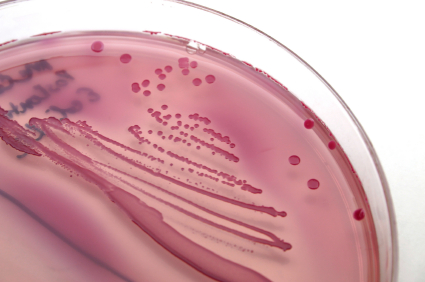A magazine where the digital world meets the real world.
On the web
- Home
- Browse by date
- Browse by topic
- Enter the maze
- Follow our blog
- Follow us on Twitter
- Resources for teachers
- Subscribe
In print
What is cs4fn?
- About us
- Contact us
- Partners
- Privacy and cookies
- Copyright and contributions
- Links to other fun sites
- Complete our questionnaire, give us feedback
Search:
Building life brick by brick

If only life were more predictable. It would be wonderful if our carefully laid plans turned out the way we expect, without going sour, falling apart or fizzling out. Biologists have this problem too. The study of life can be just as messy as, well, life itself. But recently biologists have started teaming up with engineers to build cells from scratch using interchangeable parts, creating a field called synthetic biology. Their tiny biological machines are much better behaved, and help scientists to understand how nature works in the wild. What’s more, it gives them the chance – as long as they’re building things, after all – to make a good, old-fashioned competition out of it.
An atrium winds like a long backbone through MIT’s new Stata building, and for a weekend this November it will be filled with teams of young synthetic biologists from around the world. Among them will be a small group of Cambridge undergraduates who will have spent their summer building a new biological machine to pit against the rest at iGEM, the International Genetically Engineered Machine competition. The competition will be stiff, and their opponents inventive. Last year at iGEM a team from the University of Edinburgh turned E. coli bacteria into probes for arsenic in drinking water, and the winners were a Slovakian team that engineered cells to guard against septicaemia. Dr Jim Ajioka, a pathologist at Cambridge and one of the organisers of this year’s team, explains that his charges will find themselves in a unique situation for young scientists: they’ll get to decide what they want to do. “They have to design their own project,” he says, “and that’s pretty much true for all the teams. So it’s an opportunity that students have never faced before.” But undergraduate biologists and engineers don’t normally make machines out of cells, so before the eager team can start building, they’ll need to learn how synthetic biology works.
Fortunately, what you need to build a machine is basically the same whether you’re making it in an industrial plant or a Petri dish. You need a list of parts, and you need to know what they’ll do when you put them together. In synthetic biology the parts are called biobricks. Each one is a bit of DNA that controls a certain activity within a cell – for example, some biobricks tell the cell to turn on a gene under specific conditions, while others tell it to stop. Basic functions can be combined if you’re after something more exotic; there are light-sensing biobricks that will take your photo and reproduce it in a fetching shade of avocado green. But what really gets researchers excited about building machines in a cell is predictability. Says Dr Ajioka, “the beauty of it is that through the standardisation, we have predictable outcomes of what you’re going to produce when you put parts together, so therefore you can use mathematical modelling to predict the behaviour of your system that you’ve assembled. And that’s where it’s very different from traditional methods, where you just put it together and hope to God it works.”
“A lot of people explain it as kind of the logical step forward from genetic engineering,” offers James Brown, “but it’s done from a different perspective – basically starting afresh.” James was on the first Cambridge team in 2005. He was an engineering student then, but finding himself inspired by his summer on the team, he’s stuck around to do a PhD in synthetic biology. His point about starting afresh is a good one. Whereas genetic engineering depends on shunting parts from one organism to another, synthetic biology is about building something completely new, and made to order. James credits the iGEM competition with building a new field, too. “If you look around the field of synthetic biology now – and it is small but it’s growing very very quickly – there is a community there, and lots of people who know each other now, and that’s through iGEM.”
Biotech investors are also turning on to the iGEM competition, says Dr Ajioka. The tiny machines making their debut at MIT may one day find a useful way into the real world. In the future Dr Ajioka sees biological machines at work in embryonic stem cells, or helping to grow plants for biofuels. The potential for these miniscule cellular engines is enormous, even if where they’ll take us isn’t entirely predictable. But then, that’s life.


